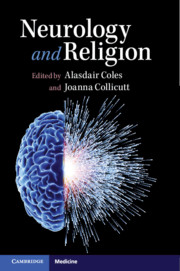Book contents
- Neurology and Religion
- Neurology and Religion
- Copyright page
- Contents
- Contributors
- Preface
- Part I The Neurological Study of Religion
- Part II Neurology and Religion
- II.I Clinical Conditions
- II.II Therapy
- II.III Death and the Brain
- Chapter 18 Examining the Continuum of Life to Determine Death
- Chapter 19 Near-Death and Out-of-Body Experiences
- Bibliography
- Index
- References
Chapter 18 - Examining the Continuum of Life to Determine Death
A Jewish Perspective
from II.III - Death and the Brain
Published online by Cambridge University Press: 28 October 2019
- Neurology and Religion
- Neurology and Religion
- Copyright page
- Contents
- Contributors
- Preface
- Part I The Neurological Study of Religion
- Part II Neurology and Religion
- II.I Clinical Conditions
- II.II Therapy
- II.III Death and the Brain
- Chapter 18 Examining the Continuum of Life to Determine Death
- Chapter 19 Near-Death and Out-of-Body Experiences
- Bibliography
- Index
- References
Summary
Medical and technological advances have enhanced our ability to sustain life, while simultaneously calling into question criteria for determining when life has irrevocably ceased. Controversy surrounding the determination of death, and to what extent irreversible brain damage needs to be established, has continued unabated for more than 50 years, raising concerns as to whether and how it can ever be resolved. These controversies will be discussed in the light of ongoing discussions in the medical literature and Halakha, Jewish legal teachings, on the diagnosis and criteria for death.
- Type
- Chapter
- Information
- Neurology and Religion , pp. 214 - 229Publisher: Cambridge University PressPrint publication year: 2019



